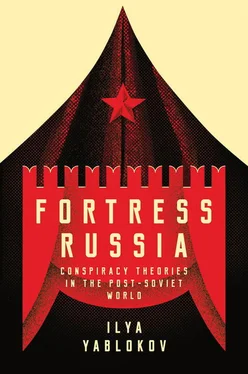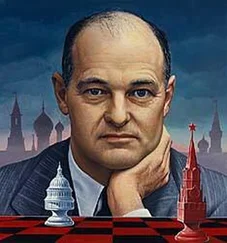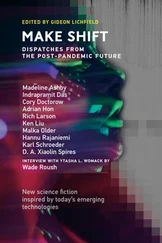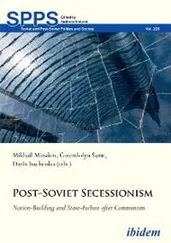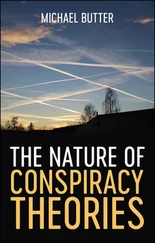As Chapter 5demonstrated, the citizen activism which had pre-empted Putin’s third presidential term resulted in increased government pressure on NGOs, which became the Kremlin’s main target in the aftermath of the ‘Orange Revolution’ in Ukraine in 2004. From then on, pro-Kremlin public intellectuals and the state-aligned media shaped the image of NGOs as the conspiring ‘Other’ within Russian society; they were supposedly supported by Western foundations and intelligence services and sought to subvert Russian society. This clearly reflected the political elites’ fear of the possibility of a colour revolution taking place in Russia. Just after Putin’s return to the Kremlin in 2012, NGOs again found themselves at the centre of an aggressive campaign to delegitimize their activities on the grounds that they were dangerous and subversive. The Ukraine crisis has cost Russian civil society the loss of several influential foreign NGOs, and has saddled it with more pressure from the state. The political campaign against NGOs after 2014 relied heavily on a corpus of anti-Western conspiracy theories developed in the 2000s with the active support of the Kremlin. The campaign demonstrated how joint effort by politicians, public intellectuals and the state-aligned media was able to use conspiracy theories to justify repressive measures taken against political opponents. The relative decline in the number of NGOs during the Putin years indicates the usefulness of conspiracy theories in the struggle for redistributing power between different political actors.
This study has also demonstrated that the Russian authorities themselves appear to be the major protagonists and producers of conspiracy theories. In the United States the federal authorities are also partly responsible for the popularity of conspiracy fears among Americans, as Olmsted (2009) has argued, because in the past they made it easier to suppress dissenting voices and conceal real conspiracies. However, for the most part conspiracy theories in the USA emerge from grassroots movements which perceive the federal government as the ultimate conspiring Other.
The picture is reversed in the Russian case. The Kremlin and its public intellectual allies are major instigators of anti-Western conspiracy theories, which are transmitted to the grassroots level of Russian society through channels under government control. This process takes the place of a coherent state ideology and legitimizes Kremlin policies. In addition, unlike in the USA, political and intellectual elites use conspiratorial rhetoric to boost their popularity and build their careers. Yet attempts on the part of independent individuals on the grassroots level to develop and apply their own populist, anti-elite conspiratorial discourses to strengthen their popularity are punished by the state.
While I was writing these final remarks, the Russian law enforcement services announced that they had uncovered a significant plot against the state led by Viacheslav Mal’tsev. Mal’tsev, a popular Youtube blogger from Saratov, made his name by criticizing Putin for being a dictator who regularly violates the Constitution. He was elected to run for parliamentary elections as one of the leaders of the democratic movement RPR-PARNAS in the parliamentary elections in 2016. Mal’tsev did not support the annexation of Crimea and called for peace with Ukraine. He called on his supporters to start a revolution in November 2017 and overthrow the corrupt regime. In summer 2017 he was arrested for a few days and, soon after, left Russia to avoid political pressure (RFE/RL, 2017). Today, FSB claims that Mal’tsev is the head of a terrorist network which planned to stir up a number of regional administrations and set off street violence (Merzlikin, 2017).
The line between using conspiracy theories against opponents and turning them into the driving force in politics is drawn very carefully. As the Ukraine crisis demonstrated, the Kremlin’s rulers are willing to engage overtly in the propagation of anti-Western conspiratorial discourse when it is politically expedient. However, the people who genuinely hold conspiratorial views rarely become serious decisionmakers in the Kremlin hierarchy; they are more often foot soldiers and middle ranking officers in rhetorical battles against the regime’s rivals.
The prominence of anti-Western conspiracy theories in contemporary Russia and their active use in domestic and foreign policy allows us to draw several conclusions about their future prospects and their relationship to the political regime. The rallies in the winter of 2011–12 symbolized a new period in post-Soviet Russian history and forced the Kremlin to reconsider its ways of governing the country. As this study has demonstrated, in the 2000s anti-Western conspiracy theories were concerned only with particular governmental and non-governmental actors who, in theory, were able to undermine the legitimacy of the ruling elite. The principal aim of these theories was to secure victory in the elections. The Kremlin’s failure to accomplish a smooth transfer of power from Medvedev back to Putin in 2011 revealed a serious dissatisfaction with the state of affairs in the country on the part of some sections of the elites and middle-class citizens. This highlighted problems within the political system itself and made it clear that it was in need of in-depth reform. As Gel’man (2015) notes, after the rallies in 2011–12, maintaining the status quo by any possible means became the Kremlin’s main goal. The Kremlin equated the status quo with the preservation of the positions of incumbent politicians. However, ordinary Russians, with the help of the state-aligned media, perceived it as social and financial stability. Against this background, anti-Western conspiracy theories evolved from being an instrument for delegitimizing political opponents into a widely used method for promoting domestic and foreign policies.
The conspiratorial language chosen by the authorities after 2012 was a tool for explaining and justifying their policies. The incessant juxtaposition of ‘the people’ of Russia, whose demand was the maintenance of the status quo, with the ‘Other’, who undermined the integrity of the nation, was a way of dealing with conflicts emerging in the country. The West was portrayed as a powerful, external foe which supported internal enemies within the nation. Attempts to mobilize the population in support of the Kremlin was carried out by means of aggressive campaigns in the state-aligned media and allowed the Kremlin to meet the social, political and interethnic challenges of the post-2012 period. Almost all of the major legislative initiatives of the Duma which were aimed at protecting the regime were presented as acts of resistance to the treacherous West.
The events in Ukraine marked another phase in the evolution of the Putin regime. The effects of the ‘Revolution of Dignity’ in Kyiv will continue to be felt by Russian citizens and their authorities for years. The Kremlin seems to have realized that playing a passive role in global events could threaten the regime’s survival, and so has made it clear that it is prepared to protect its interests at all costs. This explains its active role in the fight against IS in Syria, and its possible meddling in other countries’ elections, most notably those of the USA, both of which have dramatically changed Russia’s standing in the world. The US and European reactions to the election scandal, which has been used to portray Russia as Donald Trump’s puppet master, plays right into the hands of the Kremlin. It is perceived as another excuse to harass Russia, and is used as more ‘evidence’ that the Kremlin was right in its conspiracy theories about the West.
The Ukraine conflict and Trump’s election have demonstrated that the post-truth world has ample room to accommodate all possible conspiracy theories and to bring them into everyday life. Promoting ‘Fortress Russia’, which Mikhail Iur’ev saw as an ideal approach to regaining the country’s past greatness, is a developing project and it promises to bring more interesting twists and turns in post-Soviet politics in the coming years. It turns out that the ‘Fortress’ is not as isolated from the world – nor, specifically, the West – as the author of this book imagined. The cunning and skilful manner in which the Russian political and intellectual elites have made use of conspiracy theories in the new millennium shows how they can be imported from, and, later, exported to, other countries. Studying the use of conspiracy theories in Putin’s Russia can help us reach a better understanding of one of the most controversial intellectual phenomena of our times – and one which is growing in importance.
Читать дальше
Конец ознакомительного отрывка
Купить книгу
